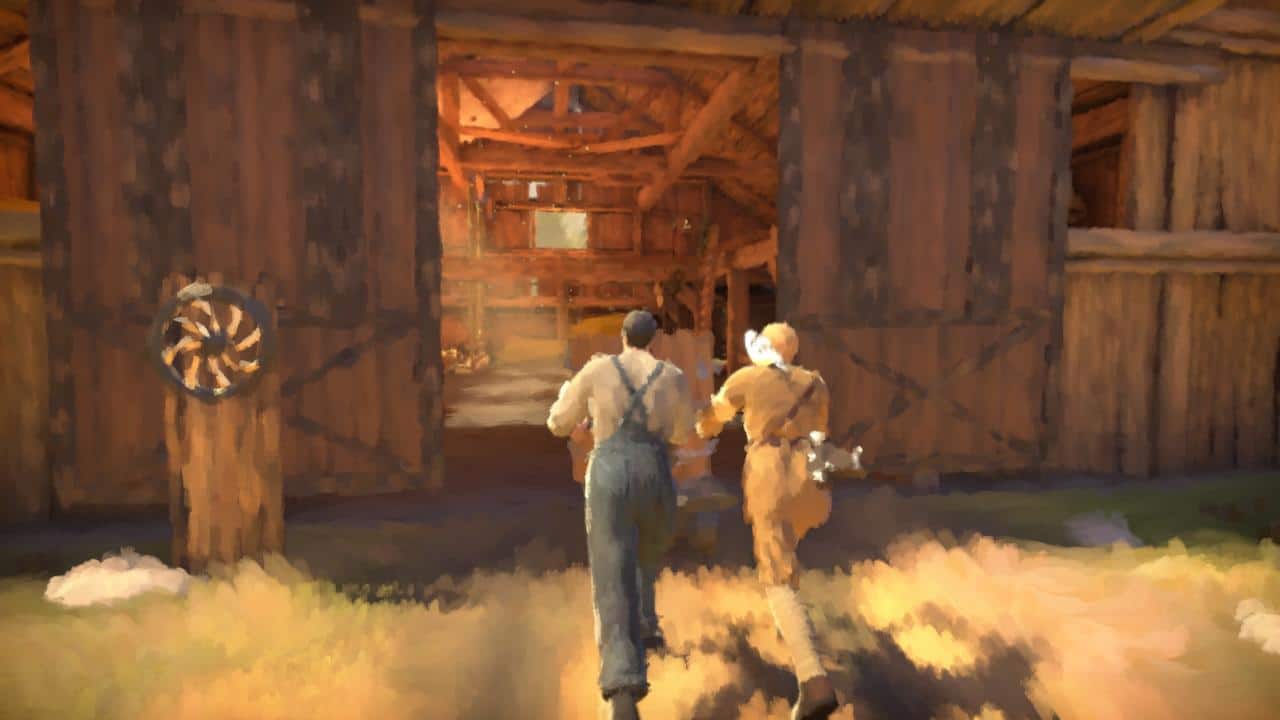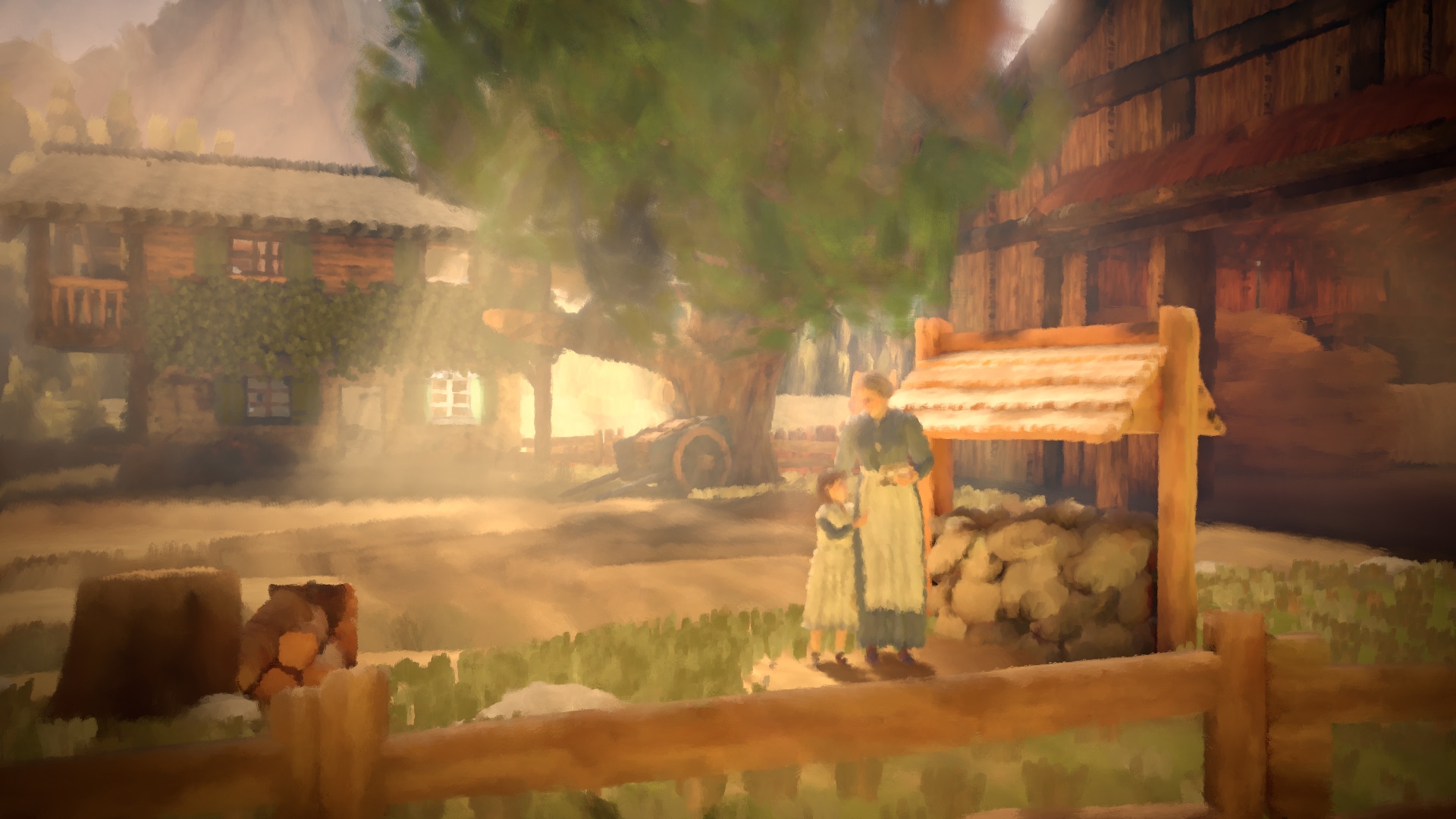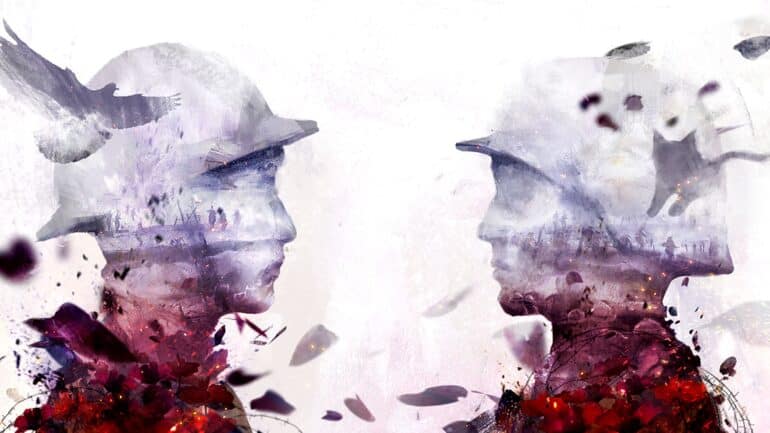You play as two characters from different sides of the war. First is Harry, a man who represents the allied side of things. He is an amateur photographer that’s looking to find his place in the world. His story is that of a hopeless romantic that’s in love with his childhood friend, Julia. Next, we have Kurt, a family man with two children and who works as an engineer for the German army. Kurt is a standup guy; a hard-working family man that’s well respected by his peers. While both characters have different personalities, both have hearts of gold, making them very likable and relatable for you good guys out there.
Their normal lives are changed when an allied major enlists Harry to be a war photographer to document the events that take place during the battle. As for Kurt, he receives news that his son’s infantry has gone missing. These events take both of these compelling characters to the front lines of World War 1. Harry is voiced by the famous Elijah Wood and he really does a good job making the character seem unsure about himself, but still somewhat optimistic. Sebastian Koch really did make Kurt come to life with his voice acting, delivering lines that really made me believe that he really was a father longing for his son. Unlike other games which are set during the war, you don’t need to fire a single shot to progress. 11-11 is a narrative game, made for those who enjoy a well-written story and colorful characters. Definitely not for those who are prone to being trigger happy.

11-11 Memories Retold almost acts as a voice to the voiceless heroes of World War 1. Throughout the game, you get to interact with a lot of NPCs. Their dialogue was touching at first but kept on repeating over and over as the game went on, but it was still enough to make me care about them. Two great examples of this were hearing a German engineer fearing for the safety of his wife, and an Allied soldier complaining about being dirty while he was set up at the fox hole at the front lines. There are some standout moments—like when Harry met a soldier from India and they bonded over their love for music—but by far the most touching and heartwarming moment for me was when Kurt was on a train and you could hear a German soldier with his guitar playing a German rendition of “the sacrament most holy”. 11-11 showed me that there were really two sides to every story and how not everything is always black and white.
But aside from its charming characters and well-written story, 11-11 has a lot of puzzle levels. They’re simple enough to solve but can oftentimes veer on the clunky side. Characters move kind of robotic while pulling levers or pushing carts and I also encountered two bugs in my initial playthrough. The art style, though beautiful and unique, could sometimes get in the way of solving these puzzles as there are no quest markers or a working map in the game. I found myself lost at one point because the art style got too convoluted which prevented me from knowing which path was the right one. This was a source of some minor annoyance, but it still gets a pass.
There are a couple of collectibles in every level, which, when collected, will reward you with some little-known facts about World War 1; Like the origin of the German uniform or stories about German snipers not moving for days. These collectibles add layers of knowledge to what we already know about war, so that gave me an incentive to look for them.
Finding them could get in the way of the narrative though, as exploring the level would sometimes kill the importance of an otherwise urgent objective. There was one point when we were under mortar fire from the enemy and you had to collect an important part to fix the radio, but I explored the entire area before completing the objective so I could be sure that I didn’t miss anything. It sort of takes you out of the story in a way, but it would really depend on the player as these collectibles are not required to progress the story.

Both characters have different jobs, Harry takes photographs for the Major that when paired with 11-11’s art style could sometimes result in stunning shots. There was one where you had to take a picture of a seagull on a ship and I found myself spending a couple minutes trying to find the perfect angle for the perfect shot, even though I wasn’t required to. Kurt, as an engineer, was required to fix radios and eavesdrop on enemies by using the different tools at his disposal. Fixing radios and eavesdropping on the enemies plays out like a puzzle mini-game, which is simple, but still interesting to solve every time. Harry also sends out pictures to his beloved Julia and the player gets to pick which one. What the player picks will affect the letters that Harry gets back. Kurt also sends out heartfelt letters to his wife and daughter back home and the player also picks out the content that he writes on it. There are usually three paragraphs to every letter and the player has 3 choices on what the content on the paragraph would be. These choices have an effect on what type of ending that you are going to get and 11-11 has multiple endings, 6 to be exact, so you need to choose wisely to get the sought after “peace” ending.
11-11 was a fun ride with a unique and beautiful art style, complemented by a well-written story that taught me that it’s really not about the destination, but the characters that you meet along the way.
Disclosure: This review is based on a review code provided by Bandai Namco Entertainment. Read our review policy to know how we go with our game reviews.
Tested: PS4
